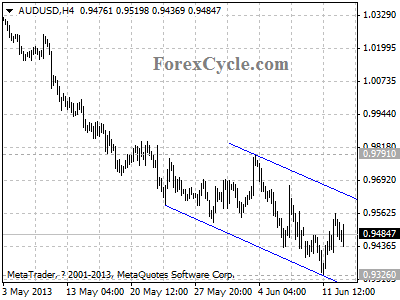It’s Thursday.
On Thursday’s you expect to read Slipstream Trader Murray Dawes’ top technical analysis (he picked the recent market sell-off like a peach).
So you may be surprised to see me (Kris Sayce) here manning the stall. If you’ve tuned in just to read Murray, don’t panic. Murray will give you his latest key analysis on the markets below.
But before you scroll down, I want to make sure you’re aware of an important development. Because this could be the most important issue of Money Morning I’ve published all year…
By now you probably know that I’ve spent the last six months working on a special project. That included pitching an idea to my publisher and the executive team here in Australia.
It was a tough pitch. After all, I was asking my publisher to spend a lot of money supporting this idea – including hiring a new full time technology analyst.
Anyway, it worked. And the culmination of those six months of effort will come to a head on Monday 17 June with the official launch of Revolutionary Tech Investor.
Revolutionary Tech Investor is a ground-breaking service in Australia…there’s nothing else like it. So, what is it?
Perhaps I can best explain by putting it in context…
Despite what you read every day in the mainstream press about banker bailouts, government debt crises, and central bank money printing, the world is on the cusp of a revolutionary moment in history
I don’t use the word revolutionary lightly. I agree with futurist Ray Kurzweil, who says the 21st century will see more advances in technology than the world has seen in the last 20,000 years.
It will be a world where killer diseases such as heart disease and cancer could become a thing of the past as scientists use high-tech cell treatments to rebuild damaged organs.
It will be a world where electric cars generate more energy than they use. (Sound impossible? It’s not. One prototype has already achieved this.)
And it will be a world where space travel becomes as commonplace as a trip from Melbourne to the Gold Coast or Sydney to Wollongong.
To put this in perspective, you can take the Industrial Revolution and the Internet Revolution, roll them into one and it will still only be a fraction of the technological change you’ll witness over the next 20 years of your life.
To show you what I mean in more detail, last week I sat down with our new technology analyst, Sam Volkering, to discuss the key events and innovations that will herald the beginning of what I call the Molecular Revolution.
We recorded this conversation, and tomorrow you’ll receive part one of this three-part video series. Each video is 10-minutes long.
- In part one you’ll learn about the advances in artificial intelligence (AI) and immersive technology. If you don’t know what that is, you will (and understand its importance) after you’ve watched the video.
- In part two you’ll hear Sam talk about the results of his DNA analysis, including the measures he can take to combat his newly-discovered heightened risk of atrial fibrillation.
- In part three, Sam explains why commercial space travel is no longer science fiction. In fact, holiday trips to the Moon and Mars could happen well within your lifetime.
I’m really excited about this project. It’s truly like nothing else we’ve ever published. If like me you’re sick of reading about central bankers and government bailouts, and you’d rather read about technology and biotechnology breakthroughs, Revolutionary Tech Investor will be a refreshing change.
It will be a banker-free zone. Think about it. What’s more important to your future? Federal Reserve chairman Dr Ben S Bernanke, or some of the amazing revolutionary technologies I’ve hinted at here?
Anyway, you’ll see what I mean soon. Until then, enjoy the rest of today’s Money Morning, and look out for the first of the three-part series in your inbox starting from tomorrow…
Cheers,
Kris
Join me on Google+
Six Revolutionary Technology Trends for the Next 20 Years
6-06-2013 – Sam Volkering
The Incredible World of Graphene
5-06-2013 – Dr Alex Cowie
After the Correction: Gold Stocks Set for the Biggest Gains
4-06-2013 – Dr Alex Cowie
The Single Best Way to Build Wealth: Invest in Business…
3-06-2013 – Kris Sayce




